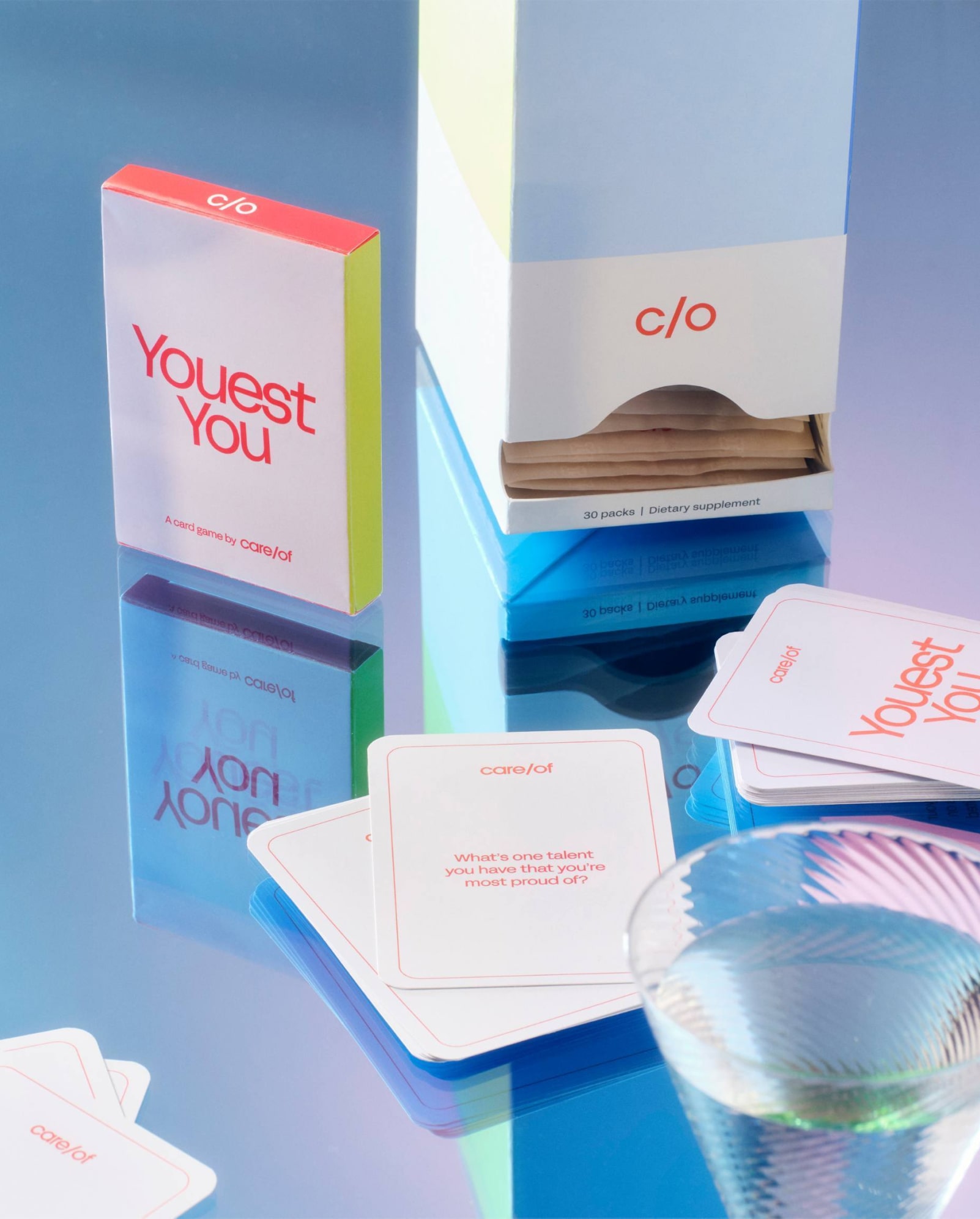nutrition
Why Your Nose Is Sometimes Blocked on One Side: Everything You Need to Know
On This Page

Having a blocked nostril is a frustrating problem. Learn more about what causes this and how you might address it.
You’re probably familiar with the feeling of congestion and sinus pressure when you’re under the weather. But if you’re perfectly healthy and you’re finding that only one side of your nose is blocked, you might be confused–and annoyed. Having one side of your nose blocked is actually a common complaint, and there are many reasons for it. In this article, we’ll discuss common causes and home remedies for freeing your sinuses again
Potential causes for having one nostril blocked
Sinus passageways can be more narrow in some people than in others, but regardless, there are many non-structural issues that can lead to one blocked nostril. Some causes can also be structural.
Potential non-structural causes of nasal blockage include:
- Seasonal sinus issues (including rhinosinusitis)
- Environmental sensitivities
- Sleeping on one side
- Weight or hormone changes from pregnancy
- Side effects from medications (including hormones, NSAIDs, nasal decongestant spray, and those that treat mood or heart conditions)
- Nasal vestibulitis
Possible structural causes of one-sided nasal congestion include:
- Nasal polyps
- Enlarged adenoids
- Septal deviation
- Nasal valve abnormalities
- Turbinate hypertrophy
If one-sided nose blockage is a common annoyance for you, check with your doctor or see an ear, nose, and throat specialist for an evaluation. Most structural issues are not obvious without professional assessment.
How to know if you have structural issues or just a stuffy nose
If nasal congestion is a problem for you, it’s important to understand whether you have a regular stuffy nose or whether you’re dealing with structural issues in the nose. Your symptoms may be able to help you tell the difference.
Structural issues tend to cause ongoing symptoms, including:
- Noisy breathing during sleep (or snoring)
- Mouth-breathing during sleep
- Facial pain
- More frequent sinus issues
- More frequent nosebleeds
- Breathing difficulties in one or both nostrils
If your symptoms don’t subside after a week, or if they’ve been a consistent problem for weeks or longer, you should talk to a medical professional to see whether something structural is the cause.
9 Ways to Help Unclog a Stuffy Nose
1. Humidifier
Humidifiers are frequently recommended for nasal congestion. The assumption is that dry air leads to dry nasal passages, which can lead to mucus overproduction. While many people claim relief by using humidifiers or diffusers, there is no evidence from clinical studies that shows real benefits for stuffy noses from common sinus illnesses. If the nose is blocked for other reasons, like environmental sensitivity, vaporizers or humidifiers may be recommended by healthcare providers. There isn’t evidence proving that those work, either.
Humidifiers are unlikely to cause harm, as long as you keep them free of mildew and mold. If your issue is structural, humidifiers are unlikely to have any effect on breathing.
2. Saline spray or neti pot
Saline nasal spray or a saline solution from a neti pot can effectively clear mucus or other small nasal blockages. The benefit is that there are no drugs or medications involved, and it can be used as often as needed. There are numerous over-the-counter saline spray products available, including misters, aerosol sprays, and pre-moistened wipes. Saline helps to moisturize nasal passages and clear mucus.
Most neti pots come with special saline packets that can be mixed with purified water. If you’re going to make your own saline nasal solution, be sure to use the right kind of salt. Iodized table salt won’t work. You’ll also need a bit of baking soda and distilled, filtered, or boiled water because tap water can contain contaminants that could lead to infections. For the same reason, you’ll also want to ensure your neti pot is thoroughly cleaned and sanitized. For more instructions, you can read about saline nasal washes on Medline or check with your healthcare provider.
3. Hydration and warm beverages
Hydration is important all the time, but if you’re dealing with annoying nasal blockage from environmental exposures or other causes of sinus pressure, hydration can be one avenue to support nasal comfort. Specifically, drinking warm beverages or sipping on soup broth could help to open nasal passages. This is typically done in the context of being under the weather, but fluids in general help to thin mucus. A study of 30 people dealing with nasal congestion found that a hot, steamy drink did not objectively impact nasal airflow. The study did find, though, that such drinks improved participants’ subjective views on nasal airflow and comfort.
4. Sleeping with head elevated
It’s hard to sleep if you can’t fully breathe through your nose. If your nasal stuffiness is due to short-term sinus issues, sleeping with your head slightly elevated can help improve breathing by preventing mucus buildup that worsens sinus pressure. Adding an extra pillow or a rolled-up towel under your pillow can adjust the angle of your nose and make it easier to rest.
5. Nasal strips
Nasal strips are popular and can be purchased over the counter. They might typically be used to address snoring, but they do so by helping to widen the nasal passages. They aren’t invisible, so most people tend to wear them at night, but if you’re struggling with daytime nasal discomfort you can wear them during the day.
A randomized, double-blind study of 59 people found that nasal strips supported better sleep and nasal comfort compared to placebo after 14 days of use.
There are numerous types of nasal strips available. Your healthcare provider or a pharmacist can offer insight as to what might work best for your needs.
6. Steam inhalation (hydrotherapy)
If you don’t have a humidifier and don’t want to buy one, you can try hydrotherapy or steam inhalation, which can have a similar effect. Warm steam can help to open nasal airways that are blocked by mucus, whether you’re under the weather or dealing with seasonal triggers like pollen or grass.
Here are a few ways to try steam inhalation:
- Sit in a bathroom with a hot shower running, but do not directly inhale the hot steam. Allow the room to fill with steam and sit in there for several minutes, 2–4 times per day.
- Heat water (but do not boil!) and place in a bowl. Stand with your head above, but not directly close the hot steam, and breathe deeply for several minutes. Repeat 2–4 times per day.
- Turn your sink on to hot water, place a towel over your head, and breathe the steam in. This can also be repeated 2–4 times per day.
- Warm-mist vaporizers can also be used, but like humidifiers, they need to be kept clean and free from mildew and mold.
7. Spicy foods
If you’ve ever eaten spicy foods and developed a runny nose in the middle of your meal, it’s because spice can cause what’s known as vasomotor rhinitis. This just means getting a runny nose triggered by spicy-hot foods. Capsaicin, the active ingredient in chili peppers, is a common trigger but other types of spice can have the same effect.
Unfortunately, this type of nasal effect doesn’t necessarily unblock nasal congestion, although it’s not harmful to try. If you find that warm spicy food unblocks mucus congestion, it may be more due to the warmth of the broth or food than the actual spice.
8. Eucalyptus or peppermint essential oils
Vapor rub is a frequent go-to home remedy for nasal congestion when you’re under the weather, but it can help nasal congestion for other reasons, too. Menthol is the active ingredient in certain essential oils, like peppermint and eucalyptus. When you inhale menthol-containing oils, they can sometimes open airways. They may not be effective for all types of nasal blockages, though, specifically if your issues are structural.
To use essential oils like peppermint or eucalyptus for better nasal comfort, you can mix with a carrier substance (like jojoba oil or almond oil) and use as a vapor rub on your chest. Generally, at least 1 tsp of carrier oil should be used per single drop of essential oil, but if there are instructions on your product, you should carefully follow those. You can also diffuse the oils for aromatherapy benefits, or add a few drops to the base of your shower. You can also just sniff the bottle of essential oil to help unclog the nose.
When using essential oils for nasal congestion, there are some important tips to follow:
- Do not apply essential oils directly to the nose or skin as they can burn or sting
- Do not ingest essential oils orally, as they can burn, irritate, or damage the sensitive tissues of the mouth, throat, esophagus, and gastrointestinal tract
- Keep away from the eyes
- Make sure to refer to the instructions on the packaging when blending, as excessive essential oil could potentially cause skin irritation. Additionally, performing a skin patch test beforehand can be beneficial.
9. Certain medications
Some over-the-counter medications are designed to help with congestion for various reasons. Sinus medications have different active ingredients, and not all will work for every type of congestion. Your doctor or pharmacist will be able to advise you on what might work best.
If you take OTC medications, be sure to follow the instructions. Nasal sprays and other types often come with a limit on how often and for how many days they can be used. It’s important to follow these guidelines or instructions from your doctor, especially since overuse can result in rebound congestion, which can be harder to address.
The Bottom Line
Having a partially blocked nose can be every bit as annoying as being completely stuffed up. If the cause is temporary and not structural, there are many home remedies that may help. Regardless of duration, it’s important to seek the opinion of a medical professional if you’re experiencing nose blockage. Structural issues, such as a deviated septum or nasal polyps can’t be addressed with self-care at home and should be checked out by your healthcare.



